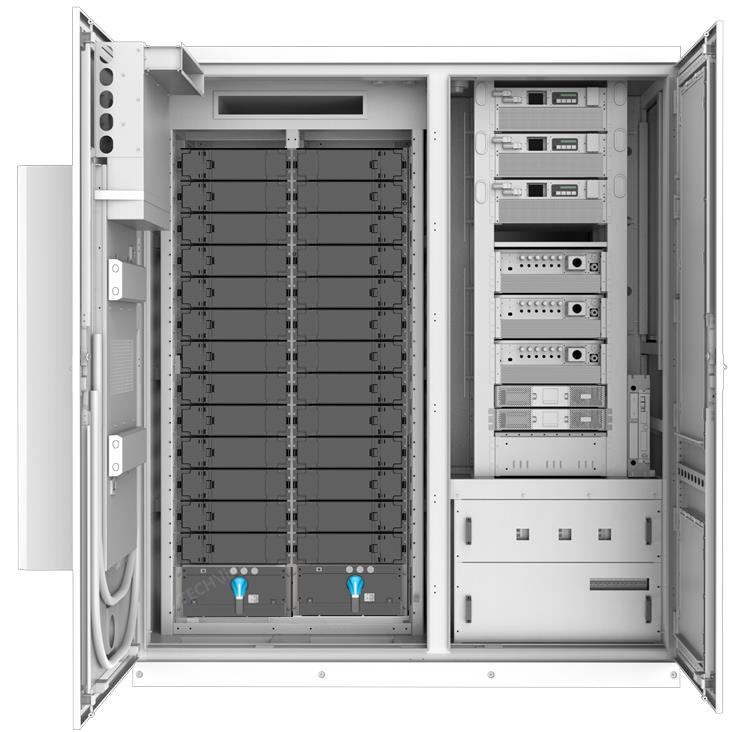As the global emphasis on clean energy intensifies, energy storage cabinets have emerged as pivotal tools in enhancing sustainability for both residential and commercial sectors. These systems store electric power efficiently, enabling users to optimize energy consumption, reduce reliance on the grid, and support the integration of renewable energy sources.
Energy storage cabinets efficiently store electric power, reducing grid dependence and facilitating renewable energy use for sustainable operations.
Integrating Energy Storage Cabinets with Renewable Energy SystemsCombining energy storage cabinets with renewable energy sources like solar and wind enhances energy efficiency. By storing excess green energy generated during peak production times, these cabinets ensure a consistent power supply, even when renewable generation is low. This integration supports the transition to green power and promotes energy independence.
Discover how energy storage cabinets can transform your energy management strategies.
Table of Contents
What Are Energy Storage Cabinets and How Do They Work?
Energy storage cabinets are systems designed to store electric power for later use. They typically house battery packs that store energy generated from various sources, including renewable energy systems. When energy demand exceeds supply or during outages, these cabinets provide battery backup, ensuring a continuous power supply. Their ability to store and discharge energy efficiently makes them integral to modern energy management.
Benefits of Energy Storage Cabinets for Residential Sustainability
For homeowners, energy storage cabinets offer several advantages:
- Energy Saving: Store excess energy generated during low-demand periods for use during peak times, reducing energy costs.
- Battery Backup: Provide a reliable power source during outages, ensuring essential appliances remain operational.
- Green Energy Utilization: Enhance the use of renewable energy by storing solar or wind power for later use, promoting clean energy consumption.
- Power Saving: Optimize energy usage by balancing supply and demand, leading to efficient energy consumption.

Advantages of Energy Storage Cabinets in Commercial Applications
Businesses benefit from energy storage cabinets through:
- Demand Charge Reduction: Lower electricity bills by reducing peak demand charges through stored energy usage.
- Energy Management: Improve energy efficiency by managing energy consumption patterns and integrating with energy management systems.
- Sustainability Goals: Support corporate sustainability initiatives by utilizing green energy and reducing carbon footprints.
- Electric Power Reliability: Ensure uninterrupted operations during power disruptions with reliable battery backup systems.
Comparing Energy Storage Cabinets with Other Storage Solutions
When compared to traditional battery storage solutions, energy storage cabinets offer:
- Enhanced Safety: Designed with safety features to prevent overheating and electrical hazards.
- Modularity: Scalable designs allow for easy expansion to meet growing energy needs.
- Integration Capabilities: Seamlessly integrate with renewable energy systems and smart grids.
- Efficiency: Provide higher energy efficiency rates, ensuring more stored energy is available for use.

Cost Analysis and Return on Investment for Energy Storage Cabinets
Investing in energy storage cabinets involves:
- Initial Costs: Expenses related to purchasing and installing the system.
- Operational Savings: Reduced energy bills through efficient energy usage and demand charge reductions.
- Incentives: Potential eligibility for government incentives and rebates for adopting clean energy technologies.
- Long-Term ROI: Over time, the savings on energy costs and potential incentives can offset the initial investment, leading to a positive return on investment.
Challenges in Implementing Energy Storage Cabinets and How to Overcome Them
- High Upfront Costs: Mitigated through financing options, leasing, and available incentives.
- Technological Limitations: Addressed by choosing systems with proven reliability and scalability.
- Maintenance Requirements: Regular maintenance ensures longevity and optimal performance of the system.
- Integration Complexity: Working with experienced professionals can facilitate seamless integration with existing energy systems.
Future Trends in Energy Storage Cabinet Technology
Emerging trends include:
- Advanced Battery Technologies: Development of batteries with higher energy densities and longer lifespans.
- Smart Energy Management: Integration with AI and IoT for optimized energy usage and predictive maintenance.
- Grid Interaction: Enhanced capabilities for energy storage cabinets to interact with the grid, supporting grid stability and demand response programs.
- Sustainable Materials: Use of environmentally friendly materials in manufacturing to further reduce environmental impact.
-scaled.png)
